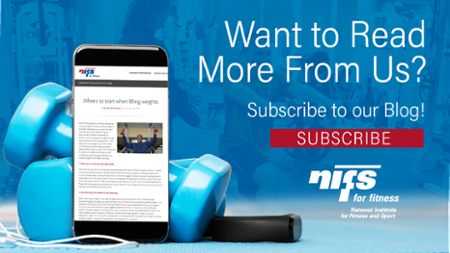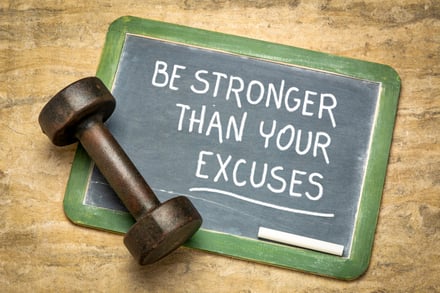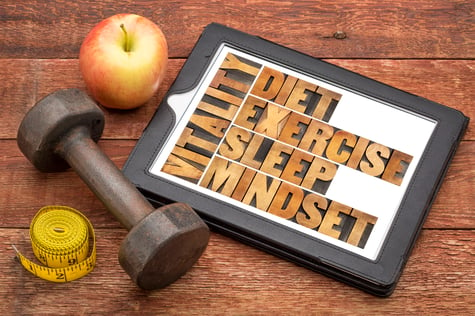 The benefits of strength training apply to individuals of all fitness levels, whether you're a professional athlete, a working adult, or an older adult looking to improve daily function and quality of life. Anyone can benefit from full-body strength training 2-3 days a week at moderate to high intensity for about 30 to 60 minutes. Here are several reasons why you should consider incorporating strength training into your weekly routine.
The benefits of strength training apply to individuals of all fitness levels, whether you're a professional athlete, a working adult, or an older adult looking to improve daily function and quality of life. Anyone can benefit from full-body strength training 2-3 days a week at moderate to high intensity for about 30 to 60 minutes. Here are several reasons why you should consider incorporating strength training into your weekly routine.
Preventing Injury
Strength training can limit or get rid of muscular imbalances between muscles in the front and back of your body, as well as between the left and right sides. According to Steve Yoon, the Chief of Sports Medicine at Cedars Sinai, these imbalances can cause injury because when one muscle is weak, the other muscles around it must compensate for that weakness, which can put increased strain or load on them and increase your risk of injuring them. However, when you strength train, you are strengthening these weak muscles as well as the surrounding muscles which decreases the likelihood of injury. In addition, strengthening muscles around joints to keep them functioning properly and prevent injuries like sprains, strains, dislocations, and tears in your joints.
Boosting Metabolism
Having a higher metabolism can make it easier to maintain or lose weight, as your body burns more calories both at rest and during physical activity. Strength training, particularly weightlifting, helps build muscle. Increasing muscle mass boosts your metabolism because muscles require more energy to function and enable movement. As a result, having larger muscles forces your body to produce more energy, which in turn increases your metabolism. This makes it easier to achieve your goals without having to work as hard.
Improving Quality of Life
The effects of strength training can improve your mental health in addition to your physical health. The reason for this is when you exercise it releases chemicals in your brain called endorphins. These are referred to as the “feel good” chemicals because they are known to reduce pain, boost your mood, and can help decrease stress and anxiety. In addition, as stated by campuslivingvillages.com, strength training has been shown to release more endorphins than doing cardio. Working out also keeps your body feeling, working, and looking its best, which can improve your day-to-day mood.
Maintaining Long-Term Health
Doing any weight bearing activities such as running or strength training improves your bone density and slows the decline of bone density over time, putting you at lower risks of fractures and osteoporosis into older age. Strength training specifically may also slow decline of muscle wasting as you get older, contributing to an improved quality of life so you can play with grandkids, be able to get in and out of bed easily and do all other activities of daily living easier and for longer.
Strength training provides numerous benefits, including injury prevention, boosted metabolism, and improved mental health, making it essential for individuals of all ages and fitness levels, which is why you should consider adding to your weekly fitness plan.
Figure out where to get started: Get a Free 30-min. Fitness Assessment with a Trainer


 Pack Portable, Balanced Snacks
Pack Portable, Balanced Snacks
 Another year is wrapping up, and you’ve made great progress toward your goals. Maybe you’ve seen improved strength, increased endurance, higher energy levels, or you’re simply feeling happier with your personal growth. Reaching our goals helps build self-efficacy — the belief in our own resources and abilities to succeed. Whether you’ve hit a new mile time, lifted heavier weights, eaten salads for lunch every day, or established a consistent sleep schedule, you’ve developed confidence in your ability to maintain these habits.
Another year is wrapping up, and you’ve made great progress toward your goals. Maybe you’ve seen improved strength, increased endurance, higher energy levels, or you’re simply feeling happier with your personal growth. Reaching our goals helps build self-efficacy — the belief in our own resources and abilities to succeed. Whether you’ve hit a new mile time, lifted heavier weights, eaten salads for lunch every day, or established a consistent sleep schedule, you’ve developed confidence in your ability to maintain these habits. As university life picks up speed, maintaining a balanced diet can often fall by the wayside. Between classes, study sessions, and social activities, it’s easy to grab whatever is convenient. However, good nutrition is essential not only for keeping your energy levels up but also for enhancing your academic performance, supporting mental focus, and maintaining overall health. Here are some practical tips on stocking your dorm or apartment with nutritious, affordable, and convenient foods.
As university life picks up speed, maintaining a balanced diet can often fall by the wayside. Between classes, study sessions, and social activities, it’s easy to grab whatever is convenient. However, good nutrition is essential not only for keeping your energy levels up but also for enhancing your academic performance, supporting mental focus, and maintaining overall health. Here are some practical tips on stocking your dorm or apartment with nutritious, affordable, and convenient foods.
 Summer is the perfect time to rejuvenate not only your spirit but also your diet. The warmer months bring an abundance of fresh produce, longer days, and a general sense of renewal, making it an ideal time to experiment with new nutritional habits. Here’s how you can make the most of summer by trying new things in your diet.
Summer is the perfect time to rejuvenate not only your spirit but also your diet. The warmer months bring an abundance of fresh produce, longer days, and a general sense of renewal, making it an ideal time to experiment with new nutritional habits. Here’s how you can make the most of summer by trying new things in your diet.
 Sometimes you might think you’re doing the right things (or at least not really wrong things) when it comes to healthy eating. But those habitual behaviors might actually cause you to consume more food and calories.
Sometimes you might think you’re doing the right things (or at least not really wrong things) when it comes to healthy eating. But those habitual behaviors might actually cause you to consume more food and calories.
 1. Do make a plan to manage your stress level.
1. Do make a plan to manage your stress level. Let’s be real. We aren’t always motivated to work out, and sometimes it’s hard to find that motivation. It’s even harder to find motivation when you don’t even enjoy exercise. It’s important to learn why getting active is so important, and it all starts with changing your mindset about it.
Let’s be real. We aren’t always motivated to work out, and sometimes it’s hard to find that motivation. It’s even harder to find motivation when you don’t even enjoy exercise. It’s important to learn why getting active is so important, and it all starts with changing your mindset about it.  With the phrase “freshman 15” commonly tossed around, many students enter college with a fear or perception that they will gain weight. However, a
With the phrase “freshman 15” commonly tossed around, many students enter college with a fear or perception that they will gain weight. However, a 
 Let’s be real: a health journey is not always linear and not always easy. Sometimes it can be overwhelming and mucky. What do you do? Where do you start? What if you backslid and need to get back on track? There is so much to health, right? If you try to fix it all at once, you might become overwhelmed and at a greater risk of failure.
Let’s be real: a health journey is not always linear and not always easy. Sometimes it can be overwhelming and mucky. What do you do? Where do you start? What if you backslid and need to get back on track? There is so much to health, right? If you try to fix it all at once, you might become overwhelmed and at a greater risk of failure.